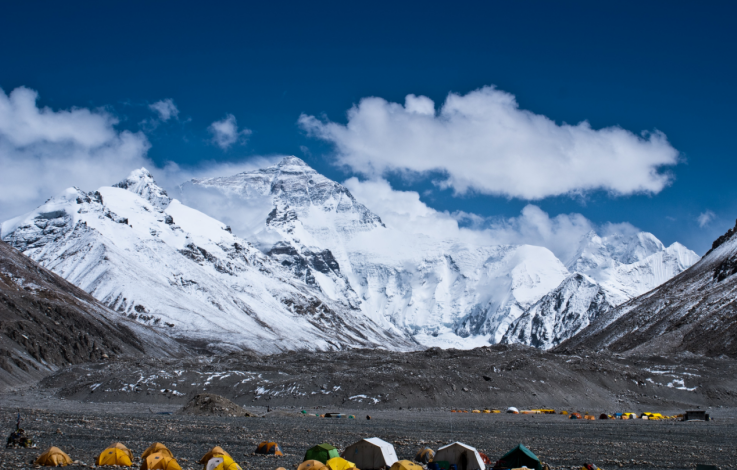Everest Base Camp: Short Trek vs. Regular Trekking – Making the Right Choice

While the beauty of Mount Everest, the highest mountain on the earth, and the trek to the lovely Everest Base Camp within the Himalayas have attracted hikers and toursists all around the world. Consider planning to go for a short trekking or deciding to go on a regular trekking when planning this unique trip.
This blog post explores the differences, benefits, and features in more detail to help individuals make the right choices: Short Trek vs. Regular Trekking for their Everest Base Camp experience.
Short Trek vs. Regular Trekking: Key Factor you must consider to pick from these two
Choosing between a regular or short trek to Everest Base Camp requires cautious consideration of your preferences, health, time and price range.
Each option comes with its own benefits and challenges which contains views, and caters to different types of passengers. Whether you opt for a short, fast, affordable trek or a short, extensive regular trek, Everest Base Camp Trek remains an incredible trek, with awesome scenery, cultural encounters and a deeper sense of accomplishment.
These key factors help individuals make the best decisions that align with their goals and preferences for this amazing travel experience.
1. Duration:
Typically taking between 10 and 12 days, short treks to Everest Base Camp offer a practical choice for individuals with limited time or limited experience with high altitude treks.
Regular treks are extended for 14 to 18 days, facilitating high-altitude treks, and possess the chances of altitude-related challenges.
2. The itinerary:
The challenging short treks tend to take a more direct route and skip some of the outlying villages and side trips included in the regular trek.
Longer regular walks provide a comprehensive itinerary, allowing pedestrians to explore other cultural sites, interact with locals and enjoy side trips to places like Lake Gokyo.
3. Exercise:
Because of the rapid ascent, short-distance walkers are at greater risk for illness at high altitudes, as their bodies have less time to adjust to the thin air.
Regular Trekking includes several days of addictive activities to help gradually adjust to altitude and reduce the chances of developing altitude-related diseases on the elevation
4. Physical Requirements:
Although short treks are more physically demanding due to the increased daily walking distance, they are manageable by individuals with good fitness and some trekking experience.
Regular Hiking is considered less challenging because it provides a more gradual climb, giving pedestrians more time to adjust to the difficult terrain.
5. Cost:
Shorter travel times generally reduce overall costs, making this a less budget-friendly option for those on a budget.
Longer delays, new licenses and side trips can contribute to the cost of regular walking, thus leading to higher charges.
6. Altitude Challenges:
Short distance walkers can experience more problem at higher altitudes, which can lead to symptoms of altitude sickness such as headaches, nausea and fatigue.
Regular slow climbing reduces the risk of altitude-related issues, allowing hikers to better acclimatize and they enjoy a comfortable trip to Everest Base Camp.
7. Cultural immersion:
The busy schedule of short trips can limit opportunities for cultural contact with local communities and exploring remote villages along the way.
Longer regular treks provide additional time for hikers to immerse themselves in local cultures, visit monasteries and participate in traditional ceremonies, providing the overall cultural experience is a great deal.
8. Visual types:
Although the short trek gives an awe-inspiring view of Everest, you may see a number of stunning views and forests on a normal trek.
The extended itinerary allows hikers to discover lots of environments, from dense rhododendron forests to alpine meadows, growing a multi-faceted and budget-friendly journey experience.
9. Large Crowds:
A shorter route can attract more travelers, especially during peak traffic periods, and can lead to congested roads and busy areas.
Long regular walks and less traveled paths can provide a quiet and peaceful walk away from the big crowds.
10. Wildlife Encounters:
Due to direct and fast trails, short treks can provide limited opportunities for wildlife viewing in the Everest region.
Long regular treks and diverse scenery increase the chances of encountering Himalayan wildlife like yak, snow leopard and various birds, making the whole trekking experience better.
11. Climate Change:
The short treks can limit the flexibility to adapt to unpredictable weather conditions, which can affect the overall walking experience.
Longer treks offer greater flexibility, allowing trekkers to adapt to changing weather conditions and offering the opportunity for a clearer view of Everest and the surrounding mountains.
Read also: Walt Disney World Dolphin Hotel: Magical Stay in Heart of Disney
Top 10 Key Considerations for Choosing the Right Trek: Short Trekking Vs. Regular Trekking
Choosing the right trek to Everest Base Camp is a detailed assessment of individual preferences, physical fitness, time constraints, budgetary considerations.
Each trek offers a unique advantage, and decisions must align with personal goals to provide you have a satisfying and enjoyable experience in the majestic Himalayas. They can take appropriate decisions in accordance with their needs and aspirations.
1. Fitness Level:
Pedestrians should consider their physical fitness and hiking experience before choosing between short and regular treks. Repetitive walking may be most beneficial for those who are in good shape and have previous experience with uphill walking.
2. Time frame:
Individuals with limited time may find a short trek to Everest Base Camp a more practical option. However, the trade-off between time and both experience and depth needs to be weighed.
3. The Attribute of Patience:
It is important to consider the ability to adjust to higher altitudes. Hikers with easy access to higher elevations can benefit from the gentle climbs and acclimatization days offered by regular hikes.
4. Budget:
Economic considerations play a role in the decision-making process. Individuals on a tight budget may find shorter treks a cheaper option.
5. Group Dynamics:
The overall fitness of the trekking team should be considered. If there are significant differences in fitness levels among group members, a shorter trek can be a more inclusive option, ensuring that everyone can complete the journey comfortably.
6. Personal goals and aspirations:
Trekkers should consider their own goals for the Everest Base Camp trek. If the ultimate goal is to reach base camp in the shortest amount of time, a short trek might align more with those goals. However, individuals looking for a more immersive and in-depth experience should prioritize regular trek.
7. Weather Considerations:
Climate can affect adaptability. Hikers should consider when they plan their walks, as additional dates around regular trekking would provide a buffer against adverse weather conditions, as well as opportunity the availability to travel safely and securely has increased.
8. Solo vs. Guided Hikes:
While solo hikers may find shorter hikes a more cost-effective option, those who opt for guided tours may find guided hikes more profitable often find services others, such as guides, porter and accommodation, which contribute to a comprehensive experience but can come with a premium price tag.
9. Environmental Impact:
Longer walks often provide opportunities for a more sustainable and responsible way of walking, allowing walkers to participate in environmentally friendly behaviors, participating in community efforts of conservation and those more interested in cleaning up the environment can resort to sustainable trekking.
10. Safety Considerations:
Safety should be a priority when traveling at high altitudes. Regular walking, with gradual adjustments, reduces the risk of altitude-related sicknesses and promotes safer travel. Pedestrians who place a high priority on safety can opt for the regular walk.
11. Cultural Connections:
Hikers interested in a more culturally enriching experience should consider walking regularly. In the regular trekkingm it allows for longer stays in the villages, allowing for deeper connections with local communities and a better understanding of Sherpa culture.
Conclusion:
Choosing between a short trek and a regular trek to Everest Base Camp requires cautious consideration of your preferences, health, time and price range. While short hikes allow for faster travel and cost-effective, regular walks provide a comprehensive and immersive experience.
Ultimately, the choice must reflect a person’s will, inspirations, and readiness to face the physical and mental obstacles of trekking through the formidable Himalayas. Whether we choose short or the regular trek, a trek to Everest Base Camp holds the potential for a profound and indelible experience.
It showcases the majestic beauty of the world’s highest mountain and showcases the vibrant cultural mosaic of the Khumbu region that promises a transformation like no other




